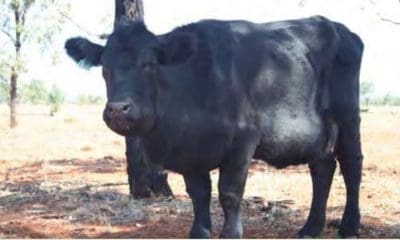Already around some areas of western Queensland, high numbers of these plants are being seen amongst the growth of pasture after the recent rain.
Pimelea is a native, but poisonous seasonal plant. It is often seen in outbreak conditions when density of competing pasture plants is low, and when soils are bare or degraded. The condition in livestock is also known as ‘St George Disease’ and ‘Marree’ disease, reflecting the regional areas generally impacted – the drier regions of western New South Wales, Queensland and northern South Australia.
Cattle with Pimelea poisoning may show a combination of clinical signs, including:
- swelling (oedema) of the jaw, neck and brisket (sometimes progressing to under the belly in severe cases)
- anaemia and pale mucous membranes
- weight loss
- diarrhoea (sometimes containing blood)
- breathing difficulties
- reduced appetite
- depression
- reluctance to move
Pimelea poisoning predominantly affects cattle, although can also affect sheep (mostly seen as scours), and occasionally horses. During the 2006 conditions when Pimelea densities in some areas were up to 69 plants per square metre, horses affected developed the full suite of clinical signs, consistent with poisoning in cattle.
Stock generally consume the plant material in its dried form (in pasture, soil or water) during normal grazing or inhale the dried particles of plant material, which is eventually ingested. The green plant is highly unpalatable.
It is reported that naive or introduced cattle are more likely to succumb to poisoning than home-bred cattle, which may suggest a learned behaviour or perhaps some resistance to the poison.
Although Pimelea is susceptible to herbicides, broad scale use of such products is not generally feasible. The most useful strategy to manage Pimeleais to identify the plant early and strategically graze pastures to avoid the drying Pimelea plants.
Source: Livestock Biosecurity Network. For more information on Pimelea – the plant, poisoning and management go to the Department of Agriculture and Fisheries ‘Understanding Pimelea Poisoning of Cattle’.
Sarah-Jane Wilson is the Livestock Biosecurity Network’s National Operations Manager. She can be contacted on 0437 725 877 or email sjwilson@lbn.org.au





HAVE YOUR SAY